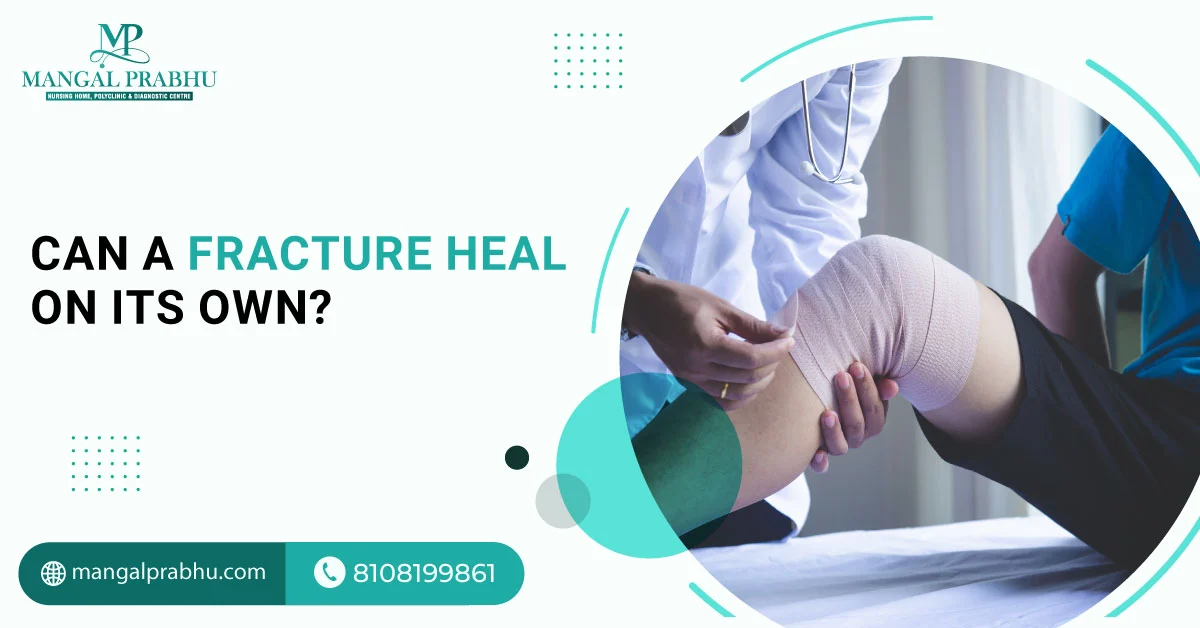
Can a Fracture Heal On Its Own?
Can a Fracture Heal On Its Own?
Our bones have limited flexibility. They can handle pressure only to a certain extent. When exposed to a significant force, they might fracture. While it’s obvious that a severe fracture requires an immediate visit to the orthopedic hospital in Navi Mumbai, people often wonder if mild fractures can heal on their own.
Fractures can often be healed with home remedies. However, this applies only to certain types of fractures. Let’s discuss it in detail:
a) Types of Fractures
A bone fracture is when your bone breaks partially or completely. It may vary in severity, depending on how forcefully your bone got hit. Here is the classification of bone fractures:
i) Simple Vs. Compound Fractures:
In a simple fracture, your bone cracks but does not break through the skin. The fracture isn’t severe enough to cause a deep wound. A compound fracture punctures your skin.
ii) Stable Vs. Unstable Fractures:
In a stable fracture, the broken parts of the bone do not get misaligned, while an unstable fracture causes the misalignment and the risk of further damage to the nearby ligaments.
It’s obvious that compound and unstable fractures require medical attention, while the simple fractures that do not cause any dislocation or skin wound can heal on their own.
b) Natural Healing Process
The timeline for recovery from a bone fracture may vary from person to person. A simple wrist or hand fracture might heal in 6 weeks, but the broken tibia can take up to 20 weeks to heal completely. Here’s the breakdown of the recovery phases:
c) Inflammation
Your body’s inflammatory response activates as soon as you have sustained a bone fracture. Due to the damage to the tissues and blood vessels, bleeding starts and the blood pools around the broken ends of the bone. This blood thickens and turns into a clot.
The dead cells die and are cleaned up from the site. During this phase, you will notice swelling and sharp pain. These are the signs that you are in the inflammatory phase of healing. It lasts 1-2 weeks.
d) Repair Phase
Once the dead cells are removed, your body will work hard to rebuild the new structure. It builds new cells, cartilage, and fibrous tissues. They all form a fracture callus, a soft patch where calcium deposits. It becomes harder to form a new, stabilized bone.
e) Remodeling
At this point, the fracture callus hardens, and the new bone starts forming. The progress is visible on an X-ray. You won’t feel the pain, swelling, and inflammation like before. However, the remodelling might go on for several months.
When Medical Intervention is Necessary
Unfortunately, not all fractures have a simple healing process. Here’s when you need to see a doctor for bone fracture treatment in Navi Mumbai:
- The bone has shattered into multiple pieces and has wounded your skin
- You have diabetes or other medical issues.
- The X-ray shows bone dislocation
Ideally, it’s best to consult a doctor to know whether the fracture is severe enough to require medical attention. Based on your symptoms and reports, you may need a cast, brace, or surgical treatment.
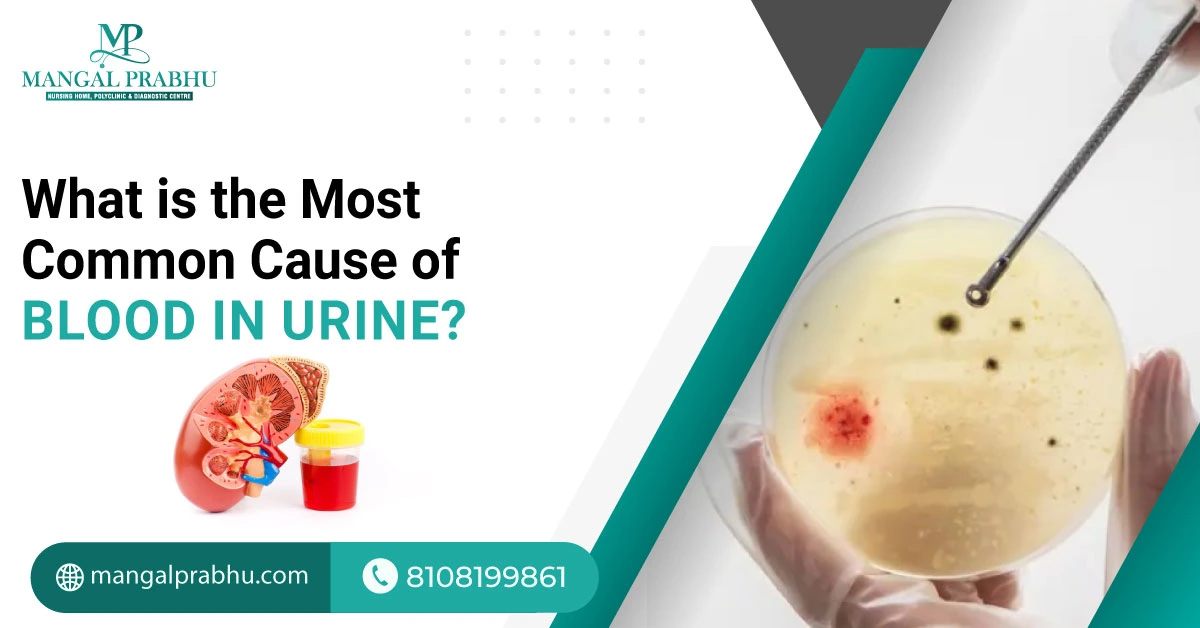
What is the Most Common Cause of Blood in Urine?
Blood in the urine or hematuria is a medical condition that indicates the presence of blood cells in your urine. You can have visible hematuria, i.e., your urine might turn red, pink, or other dark colors. Or, it could be microscopic (the blood cells might not be visible to you) but can be identified by a urine test recommended by a urologist in Navi Mumbai. In this post, we’ll discuss the different causes of hematuria.
Common Causes of Blood in Urine
Usually, when your kidneys make urine, they do not include blood cells. In people with a urinary tract issue, the blood cells might leak into the urine. Here’s why it occurs:
a) Urinary Tract Infections (UTIs)
Bacteria can enter the urethra and bladder, where they multiply, leading to an infection. UTIs can cause hematuria, a burning sensation while urinating, a frequent urge to urinate, and a strong, unusual odor in urine.
b) Kidney Stones
An imbalance in the minerals in your urine can form hard crystals, which eventually turn into stones. These can be different sizes and might be in your bladder or kidneys. They might not cause symptoms unless they get stuck in the ureters or other parts of your urinary tract and block urine flow. They can also cause blood in the urine.
c) Bladder or Kidney Infections
UTIs occur in the lower urinary tract but can sometimes affect the upper part, i.e., your kidneys. If the bacteria reaches your kidneys, they might cause inflammation in the urinary tract and weaken the blood vessels. Hematuria can occur when the blood vessels break, leaking blood into your urine.
Less Common Causes
Here are a few other potential causes of hematuria.
i) Enlarged Prostate
This is a common urinary issue in men over 50. As the prostate gland grows, it puts pressure on the surrounding organs, including the bladder. This can lead to symptoms like blocked urine flow, a constant urge to pee, and hematuria. Blood might also occur due to the fragile blood vessels that tend to break under the pressure of the prostate.
ii) Genetic Diseases
Sickle Cell Anemia and other inherited blood disorders can lead to visible blood in the urine or blood drops that are too small to be seen by the naked eye.
When to Seek Medical Attention
Visit a healthcare provider to discuss the most viable blood in urine (hematuria) treatment in Navi Mumbai. While it may be harmless and not a major issue in some cases, hematuria can also indicate a serious underlying problem that requires immediate medical attention. See a urologist if you experience these symptoms:
- A considerable amount of blood in your urine
- Fever and nausea
- Pain in the back
- Blocked urine flow or frequent urge to urinate
Conclusion
Hematuria isn’t a disease in itself but a symptom that may point to an underlying health issue. It can occur as a sole symptom or accompanied by other potential issues, such as back pain, difficulty urinating, or incontinence. A urologist can diagnose the cause of hematuria and plan the most suitable treatment for your case.
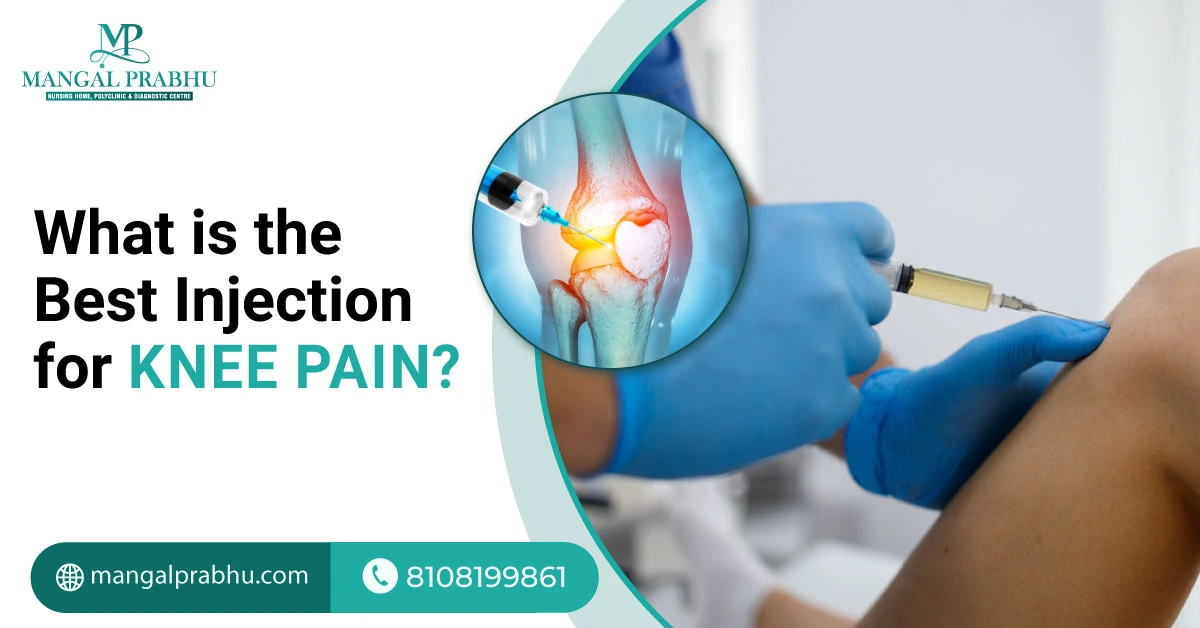
What is the Best Injection for Knee Pain?
Knee pain affects millions of people worldwide. Among the many causes, the most common is arthritis. Chronic knee pain can make your daily activities difficult. Whether it’s walking, climbing stairs, or getting up from a chair, most of your daily tasks will become challenging and painful. It’s important to schedule a visit to the orthopedic hospital in Navi Mumbai to identify the cause of the knee pain and determine the most viable treatment plan. In the meantime, here’s a look at the common causes of knee pain and a few effective injections that may help manage your symptoms.
Common Causes of Knee Pain
Knowing the causes of knee pain will help you decide the best treatment. Here are a few:
a) Arthritis
Osteoarthritis and Rheumatoid Arthritis (RA) are common knee issues that can affect people of any age. Osteoarthritis refers to the wear and tear of the cartilage, which results in excessive pain and stiffness around the affected joint. RA is an autoimmune condition that results in joint inflammation.
b) Injuries
Knee pain is also common in people who work or participate in activities that carry a high risk of joint injuries, such as sports. ACL tears, sprains, strains, and meniscus tears are a few common examples.
c) Overuse
Knee overuse caused by activities that put immense pressure on the knee joint can also lead to excruciating pain, inflammation, and joint stiffness.
What is the Best Injection for Knee Pain?
Injectables can be used for quick and long-term relief from joint inflammation and pain. Your doctor will inject the healing substances directly into your affected joint to help manage your symptoms. Here’s what may work:
i) Corticosteroid Injections
If your knee pain is due to arthritis, an injury, or other conditions that led to excessive joint inflammation, you might be a good candidate for corticosteroid injections. They contain strong anti-inflammatory and numbing substances that bring the inflammation down and offer relief from pain.
ii) Hyaluronic Acid Injections
With your cartilage wearing down, your bones might rub against each other as you move. This also results in the loss of hyaluronic acid, which acts as the lubricant supporting the natural joint movements. Hyaluronic injection, also called viscosupplementation, mimics the natural hyaluronic acid and provides stability and flexibility to your knee. The effect can last for weeks to months, depending on the severity of your knee pain.
iii) Platelet-rich Plasma (PRP) Injections
This modern therapy focuses on injecting your own blood into your knee joint to speed up healing. The procedure involves drawing the patient’s blood, increasing the concentration of platelets, and injecting it back into their knees.
iv) Stem Cell Therapy
Another effective procedure that the doctor for knee pain treatment in Navi Mumbai recommends is stem cell therapy. It aims to slow the deterioration of your knee joint by using your body’s healing mechanism. It involves injecting stem cells, which are drawn from your bone marrow, into the affected knee joint.
Conclusion
Each injection has its advantages and limitations. It’s best to talk to your doctor about your symptoms and medical history. They will run tests on your knee joints to analyze the level of damage before recommending injectables.
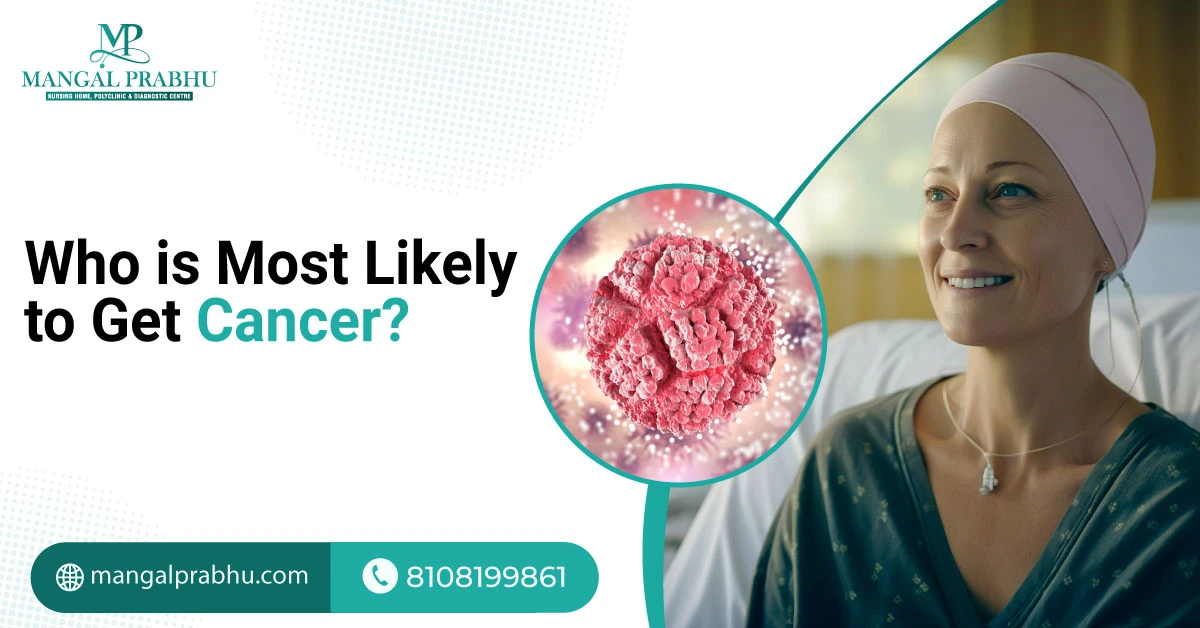
Who is Most Likely to Get Cancer?
Cancer is a severe chronic disease that can affect anyone. The World Health Organization states that 30-50 percent of cancers can be prevented. A cancer specialist in Navi Mumbai believes that your lifestyle choices play a significant role in increasing your risk of having cancer. Quitting smoking and having a healthy physical routine (to name a few) can mitigate this risk. In this post, we’ll take a look at who’s most likely to get cancer and why.
Who is Most Likely to Get Cancer?
i) Genetic Factors
While cancer doesn’t directly pass from parents to their offspring, the gene mutations can be inherited. Certain gene variants might increase your likelihood of developing certain types of cancers.
For example, BRCA1 and BRCA2 gene mutations are linked to an increased risk of breast and ovarian cancers. Mutations in the RB1 gene can cause eye cancer in children. That said, having cancer-related gene variants doesn’t mean you will definitely develop cancer. It only increases the risk. It’s advisable to schedule regular checkups with your healthcare expert just to be on the safe side.
ii) Lifestyle Choices
As mentioned above, certain lifestyle choices are associated with an increased risk of cancer. Here are a few:
a) Smoking and Tobacco Consumption:
These are the biggest risk factors for cancer. Smoking interferes with the cell’s DNA, making them more likely to grow aggressively, forming a tumor. These are linked to throat, mouth, bladder, pancreatic, and lung cancer. Not only smoking but exposure to second-hand smoke may also increase your risk.
b) Diet and Exercise Habits:
Your diet also affects your cancer risk. People eating a high amount of red meat, processed foods, saturated fats, and sugary foods are more likely to develop cancer than those eating healthy and nutritious foods, such as leafy greens, whole grains, and fruits. Living a sedentary lifestyle can also negatively affect your risk of having cancer. It’s advisable to be physically active. This will keep your weight and hormones in check.
c) Alcohol Consumption:
Another preventable risk factor of cancer is alcohol consumption. Alcohol is linked to a heightened risk of throat, mouth, esophageal, colorectal, and liver cancer.
iii) Environmental Exposures
Certain environmental factors, such as sunlight and radiation, can expose you to carcinogens, thus increasing your risk of developing melanoma and other types of cancers. Exposure to toxins in the workplace can also contribute to your risk.
iv) Age and Gender
Most patients get cancer after 50, as DNA damage occurs over time. Cancer risk also depends on gender. Women are more likely to develop breast, ovarian, and cervical cancer, while men are at an increased risk of colorectal, prostate, and lung cancer. That said, young people can also develop it. It’s best to visit the cancer hospital in Navi Mumbai for regular screenings.
v) Medical History
People who have had cancer before are more likely to develop it in the future. Certain types of infections, such as HPV, can heighten your risk. Weakened immunity is also associated with an increased risk of cancer, as it makes you more prone to infections. That’s all about the factors affecting your risk of getting cancer. Although you can’t completely eliminate the risk, certain factors that heighten your risk can be controlled.

What is the First Sign of Kidney Problems?
Your kidneys filter waste and excess fluid from your bloodstream. If something goes wrong, you may not notice the symptoms immediately. Instead, the symptoms often crop up when the disease has reached an advanced stage. That’s why it’s important to keep in touch with a nephrologist in Navi Mumbai to ensure your kidneys are working optimally.
Although the only way to know if you have an existing kidney disease is through tests, certain symptoms can also indicate kidney issues. We have discussed a few in this post:
What is the First Sign of Kidney Problems
When your kidneys malfunction, fluid and waste accumulate in your body. Over time, you may start noticing unusual symptoms, the severity of which may vary depending on how much the disease has progressed. Here are a few common signs you’ll see initially.
1) Fatigue and Weakness
People with kidney diseases are likely to feel tired often. Weakness is also a common sign. This happens when impurities accumulate in your blood.
2) Swelling
If your kidneys do not filter your blood effectively, you might develop swelling in the hands, ankles, feet, and face. This occurs because of excess salt and fluid in your body.
3) Changes in Urination
Another common sign of kidney disease is a changed urination pattern. You might feel the urge to urinate more often, particularly at night. You might also notice foamy urine.
4) Blood in the Urine (hematuria)
It is also linked to kidney diseases. Ideally, your kidneys keep the blood cells in your body when creating urine. When they aren’t working well, these blood cells might get leaked into the urine, causing hematuria.
Other Early Indicators
Here are a few other signs that indicate kidney disease:
a) Persistent Back Pain
If you have dull, sharp, and persistent pain on either side of your lower back, it could be a sign of kidney disease. Sharp and severe pain that doesn’t get better with movement might indicate kidney stones.
b) High Blood Pressure
Your kidneys control your blood pressure. When they aren’t working optimally, your blood pressure might spike, which, in turn, might further worsen kidney function.
c) Unexplained Weight Loss
As toxins build up in your blood, patients experience nausea, loss of appetite, and vomiting, all of which contribute to weight loss.
If you have been losing too much weight without trying, and it’s accompanied by swelling, loss of appetite, and changes in the urination pattern, it’s worth checking with your doctor to rule out kidney diseases.
d) Shortness of Breath
Too much fluid accumulation in the lungs can lead to shortness of breath. It can also occur due to anemia.
When to See a Doctor
Identifying the early symptoms of kidney disease is crucial to managing the condition and preventing it from progressing to the advanced stage. Unfortunately, kidney diseases are often left undiagnosed as patients often mistake the symptoms for other common health issues. If you notice the above symptoms with excessive fatigue, extreme weight loss, and frequent urination with foamy texture and unusual odor, it’s time to schedule a visit to a nephrologist to discuss the most viable kidney disease treatment in Navi Mumbai.
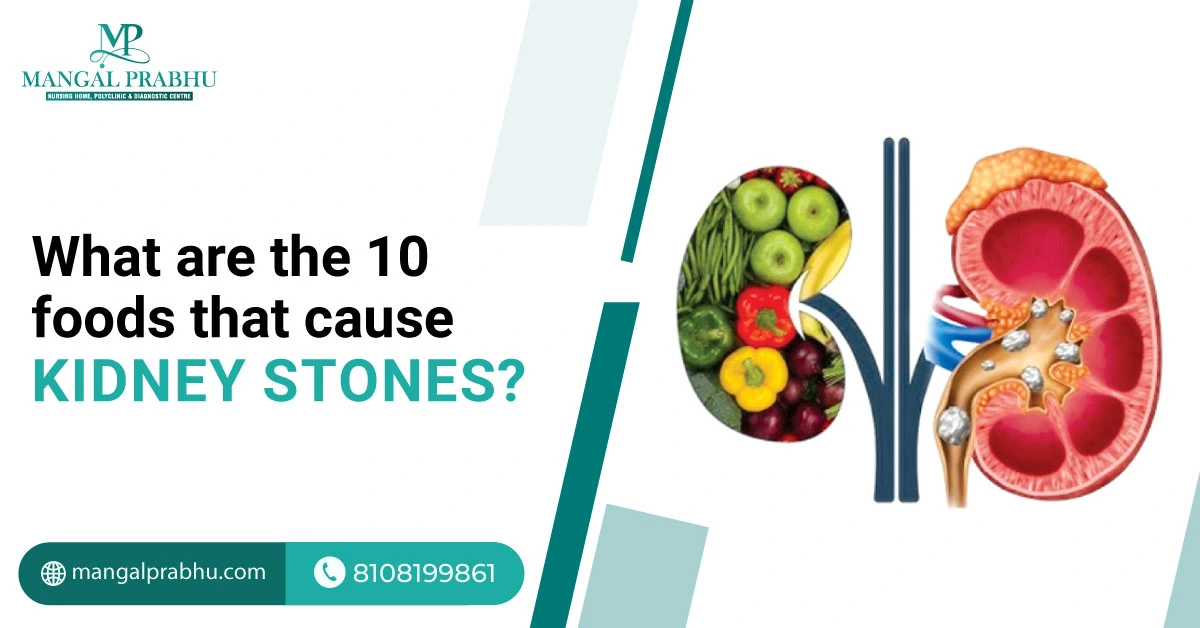
What are the 10 Foods that Cause Kidney Stones?
Kidney stones are hard mineral deposits that form in the kidneys and can pass through the urinary tract. Smaller kidney stones might go unnoticed, as they can pass through urine. Larger kidney stones can get stuck in the ureters and other parts of the urinary tract, blocking urine and causing immense pain. This requires kidney stone treatment in Navi Mumbai. Many factors contribute to the heightened risk of developing kidney stones, but unhealthy food choices are often the most common culprit.
10 Foods That Cause Kidney Stones
Here are the top 10 foods you should avoid to prevent kidney stones.
1) High-Oxalate Foods:
Calcium-oxalate stones form when you eat a diet rich in oxalates with a low intake of calcium. It’s best to eat oxalate-rich foods, such as spinach, beets, nuts, and chocolates, in moderation or combine them with calcium-rich food.
2) Excessive Sodium:
Too much sodium in your diet can lead to a high concentration of calcium in your urine, which can cause kidney stones. Limit your sodium consumption to less than 2,300 mg per day. Avoid packaged foods, canned soups, and junk food.
3) Animal Proteins:
Red meat and organ meats can raise uric acid levels while reducing citrate, increasing your risk of developing kidney stones. Replace them with plant-based proteins.
4) Sugary Foods/Drinks:
Like sodium, sweetened beverages can increase calcium in the urine and may disrupt urinary composition. Avoid too many candies, pastries, desserts, and sweetened drinks.
5) Dairy Products:
Although calcium from dairy products like milk and cheese is healthy, overconsumption of calcium-rich foods or calcium supplements can cause calcium oxalate stones. Eat dairy products in moderation (1200 mg daily) and drink enough water.
6) Caffeine:
Caffeine in moderation is safe, but excessive intake can cause dehydration, which can increase the risk of kidney stones. To stay hydrated, limit your tea and coffee intake to 1-2 cups a day and drink water instead.
7) Alcohol:
By reducing your urine output and causing dehydration, alcohol can increase your risk of developing kidney stones. Quit alcohol and switch to healthier drinks instead.
8) Purine-rich foods:
A purine-rich diet can increase uric acid levels in the body, leading to uric acid or calcium stones. Sardines, shellfish, and organ meats are some examples of purine-rich foods.
9) Processed Foods:
Kidney stone specialists in Navi Mumbai advise people to steer clear of processed foods like frozen meals, instant noodles, and all types of packaged items. That’s because these foods contain a considerable amount of sodium and preservatives, which might increase calcium excretion in urine, causing kidney stones.
10) Supplements Overuse:
Excessive calcium, especially if it comes from supplements, combined with overuse of vitamin C and protein supplements, can cause kidney stone formation. Sticking to natural, whole, and unprocessed foods is best. Supplements should only be used when recommended by a healthcare specialist.
Conclusion
Your dietary choices can cause kidney stone formation. This is particularly true for people who eat calcium-rich, oxalate-rich, purine-rich, and sodium-rich foods. Anything that affects the urinary composition can increase your risk of kidney stone formation.
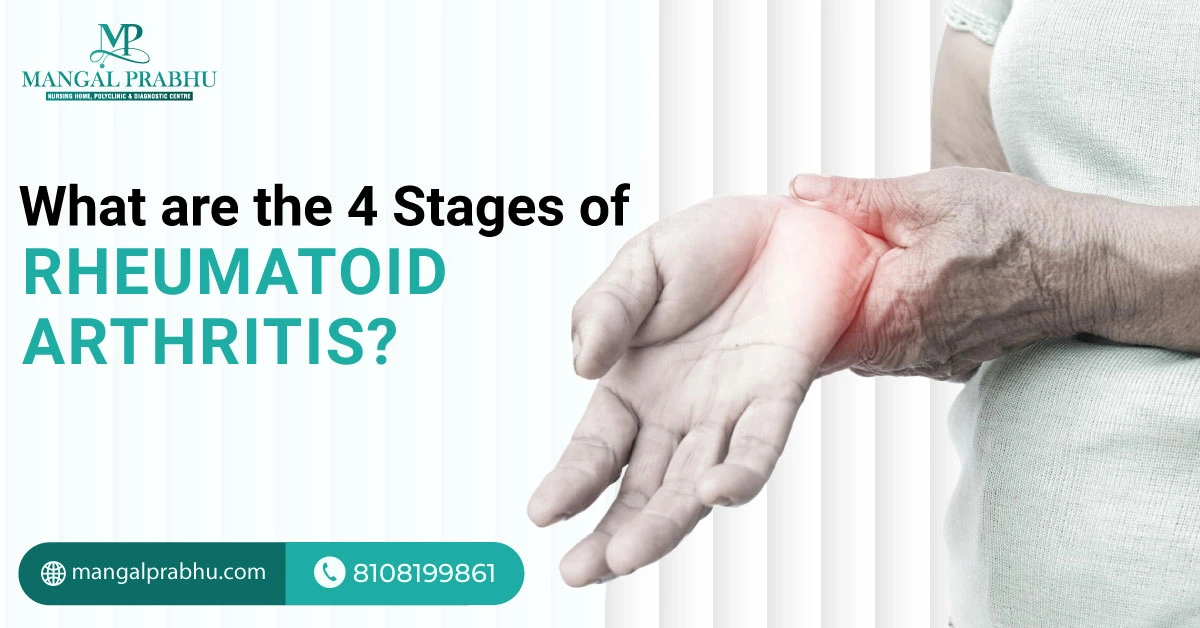
What are the 4 Stages of Rheumatoid Arthritis?
Rheumatoid arthritis is an autoimmune disorder in which your immune system mistakenly attacks your joints, causing inflammation, swelling, pain, and eventually joint damage. Patients with rheumatoid arthritis might experience varying symptoms, but the disease usually progresses in four stages. An orthopedic doctor in Navi Mumbai can recommend a treatment plan based on your stage of RA and how fast it’s progressing.
Early detection is key to slowing the progression of the disease, thus improving your chances of retaining your joint mobility.
Stage 1: Early RA
The initial symptoms of rheumatoid arthritis include joint pain and mild swelling in the feet and hands. The inflammation in the joints can cause swelling in the tissues, which may lead to pain. If it occurs in the hands, you might notice pain in the fingers and knuckles, which might improve with movement. Diagnosis of RA at an early stage is often challenging, as symptoms are often confused with a normal part of aging.
Symptoms
- Mild pain in smaller joints, like those of your hands and feet.
- Fatigue
- Swelling in the joints
Diagnosis
A blood test and imaging tests like X-rays and MRI can show joint damage.
Stage 2: Moderate RA
The second stage of RA damages bones and cartilage. When that happens, you might experience loss of mobility in the affected joint. For instance, it might become difficult for you to move or bend your fingers with second-stage rheumatoid arthritis.
Symptoms
- Increased joint pain
- Prolonged periods of reduced mobility
- Joint stiffness
- Increased swelling
Diagnosis
A blood test can detect RA markers, which can confirm the diagnosis.
Stage 3: Severe RA
The third stage of rheumatoid arthritis is often considered severe. As the cartilage and bone destruction speed up, extreme pain and significantly reduced mobility occur. Joint deformation makes the swelling more visible. Clear examples are twisted fingers with heavily swollen knuckles.
Symptoms
- Carpal tunnel syndrome
- Extreme pain in the joints
- Severe loss of mobility
- Visible joint deformity
Diagnosis
Diagnosis becomes clear at this stage. With symptoms indicating rheumatoid arthritis and your blood tests showing inflammatory markers, your doctor can diagnose RA.
Stage 4: End-stage RA
You might experience severe pain, joint deformity, swelling, and lost mobility at the end-stage RA. You will lose most of your joint function and might experience muscle weakness. This stage mainly affects your mobility. You may need mobility-assisted devices to move your affected joints freely. Due to the compromised mobility combined with pain and swelling, RA at the last stage can affect your quality of life.
How the Disease Progresses
RA progresses gradually. You might experience periods of relief with sudden worsening of the symptoms. Fortunately, most people do not reach the fourth stage. Still, the pain, deformity, and loss of joint function can interfere with your daily life. It’s advisable to seek rheumatoid arthritis treatment in Navi Mumbai as soon as possible. Early treatment can help slow the progression of the disease and offer significant relief from the pain and other symptoms.
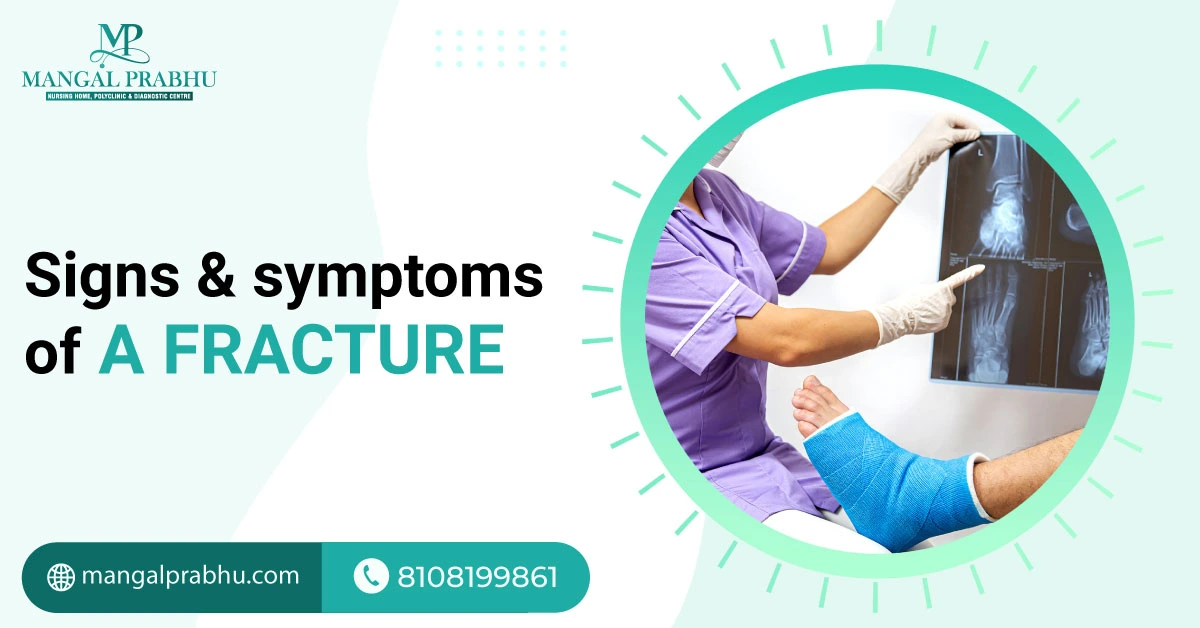
Signs and Symptoms of a Fracture
A crack in your bone due to trauma or stress can lead to a fracture. People diagnosed with osteoporosis and bone cancer are also at an increased risk of developing fractures. Depending on the severity of the trauma, a fracture could be closed (the bone cracks but doesn’t break through your skin) or comminuted (the bone breaks into multiple pieces). If you suspect a fracture, get to the nearest orthopedic hospital in Navi Mumbai for the best care.
Common Causes of Fractures
i) Accidents and falls:
Healthy bones are strong enough to withstand pressure effortlessly. However, if you experience a serious fall or an accident that puts a great deal of force on your bones, they might break.
ii) Sports injuries:
Sports that require a lot of twisting and turning can cause fractures. People involved in sports can develop spiral, transverse, comminuted, hairline, and stress fractures.
iii) Osteoporosis and bone weakening conditions:
With age, your bone density and resilience decrease significantly, making you more prone to sustaining a fracture even with low-impact trauma.
Signs and Symptoms of a Fracture
a) Pain and tenderness:
Intense pain on the injured site is the hallmark symptom of a fracture. It’s your body’s way of telling you that something isn’t right and requires medical attention. People with fractures might feel pain when touching the site, moving it, or putting weight on it. It may not get better with rest.
b) Swelling and bruising:
The tissue damage can cause swelling, which won’t go down. You might also notice bruising (your skin turning blue, purple, or yellow) that indicates bleeding under your skin.
c) Deformity or abnormal appearance:
Fractured bone appears deformed, as the bone breaks and causes a significant misalignment. In some cases, the bone may pierce through the skin, which makes its deformity pretty obvious.
d) Inability to move or bear weight:
Bone fractures are extremely painful. The pain, combined with swelling and nerve damage, can restrict your movement. You won’t be able to lift weights or perform any physical activity until the bone gets back in shape.
Types of Fractures
Fractures are classified into different types based on the severity of the wound.
1) Simple vs. compound fractures:
In simple fractures, your bones crack but do not penetrate the skin. So, there’s no visible open wound. Compound fracture does penetrate the skin and requires immediate medical care.
2) Stress fractures:
It refers to a small crack in your bones caused by repetitive movements or overuse of your bones.
3) Greenstick and comminuted fractures:
Greenstick fractures are more likely to occur in children, as they have soft, flexible bones. The bone bends and cracks slightly without breaking completely. Comminuted fractures are more severe and are often caused by a serious fall or an accident. In this, the bone breaks into multiple pieces. You must see a fracture treatment doctor in Navi Mumbai if there’s a noticeable deformity combined with excruciating pain and a severe misalignment of the bones after an injury. Medical treatment is specifically required if the pain persists and you experience restricted movements.
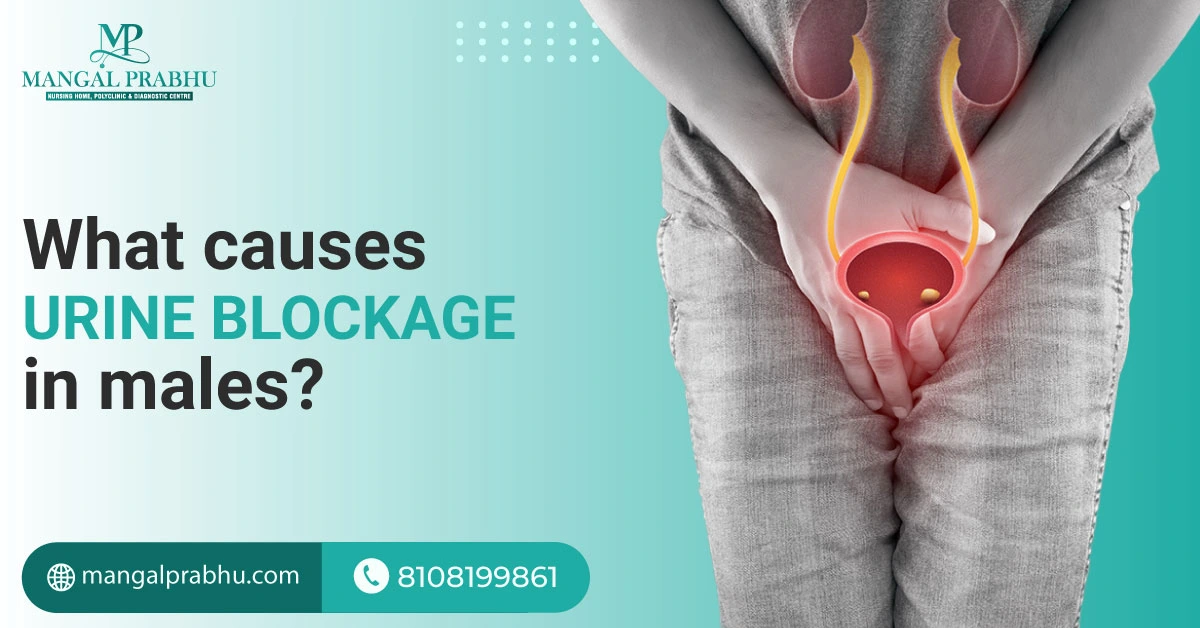
What Causes Urine Blockage In Males?
An obstruction in any part of the man’s urinary tract can interrupt the normal urine flow. The blockage could be in the kidneys, which produce urine, or the urethra (responsible for releasing it). It’s important to see a urologist in Navi Mumbai if you suspect urine blockage, as an untreated obstruction can lead to uncomfortable symptoms, infection, and, in severe cases, kidney damage. The question is, what causes urine blockages in males? Let’s delve into some common reasons that might contribute.
What Causes Urine Blockage In Males?
1) Benign Prostatic Hyperplasia (BPH):
This is the most common cause of urine blockages in men. With age, the prostate gland that sits right beneath the bladder tends to get bigger. Its increased size can squeeze the urethra, affecting the urine flow. If your urinary obstruction is caused by BPH, you might also experience frequent urination, an inability to empty the bladder, and a weak or slow stream.
2) Kidney Stones:
These are hard mineral deposits that form in your kidneys and might travel down the ureters, causing an obstruction. These crystals can block the ureters (which carry urine to the bladder). The hallmark sign of kidney stones is debilitating pain in the back. Some people experience blood in the urine and nausea.
3) Urinary Tract Infections (UTIs):
UTI cases are more common in women, but men can also get this bacterial infection. It can block the urethra, disrupting the urine flow. If the blockage occurs due to UTI, you might notice cloudy urine, pain with a burning sensation while urinating, hematuria, and an uncontrollable urge to urinate.
4) Urethral Stricture:
Men who’ve had surgery or experienced a trauma that resulted in scar tissue formation in the urethra can also develop urine blockage. This happens due to the narrowing of the urethra due to scar tissue, inflammation, or an infection.
Symptoms and Diagnosis
Urinary obstruction can occur suddenly or gradually. Symptoms usually vary depending on the severity of the blockage. Here are some common symptoms people with a blocked urinary tract might experience:
- Difficulty starting to urinate
- Slow urine stream
- Frequent urge to urinate
- The feeling of unemptied bladder
- Pain during urination
- Blood in the urine
- Back pain
Treatment Options
Treatment of urinary obstruction in Navi Mumbai is determined based on what’s caused it. Here are a few options a urologist will discuss with you.
a) Medications:
Certain medications can help bring the prostate back to its normal size, although these may not always be effective. If you have a UTI, antibiotics can help clear the infection.
b) Surgical Interventions:
Surgery to widen the urethra may be necessary in case of urethral stricture. Surgery might also be needed in men with enlarged prostate or kidney stones that are too big to be removed naturally.
c) Lifestyle Changes:
A few lifestyle tips, such as limiting your caffeine and alcohol intake, drinking plenty of fluids, and peeing when you feel the urge to urinate, can help ensure optimal kidney function. See a urologist immediately if you experience a complete urinary tract obstruction with the inability to urinate.

How Does Cancer Spread?
What makes cancer life-threatening is its ability to spread to the major organs. No matter where it started, it can travel through your bloodstream or lymph nodes and invade your vital organs. In medical terms, the process is called metastasis. An oncologist in Navi Mumbai provides cancer patients with an accurate diagnosis and a suitable treatment plan.
Simply put, cells from the tumor escape and enter your blood, transporting them to different parts of your body. Research regarding “how does cancer spread” is still going on. The more we know about the process, the more treatment options we can explore for a higher success rate.
How Does Cancer Spread?
Metastasis is a complex process. It starts with local invasion, in which the cancer cells break away from the tumor (in the primary site) and enter the nearby tissues.
From there, they find their way into your bloodstream and lymphatic system. That’s called intravasation. Your immune system kills most cancer cells at this stage, but a few might escape and settle in a new location. They form a secondary tumor there.
Common Sites for Metastasis
The areas invaded by the cancer cells depend on where the cancer starts. For example, cancer starting in the breast will travel to the lymph nodes of your underarms rather than your abdomen.
It also depends on the cancer cell type. These cells tend to settle in locations where they can thrive. Prostate cancer cells prefer your bones, as they offer these cells the environment to grow and spread. Here are the common locations for cancer cells to spread:
- Bladder cancer: Bones, lungs, or liver
- Breast cancer: Brain, liver, and lungs
- Prostate cancer: Bones, liver, lungs
- Lung cancer: Bones, brain, and liver
Most types of cancers spread to the lungs, liver, bones, and brain.
Detection and Diagnosis of Metastatic Cancer
Some cancers are detected when metastasized—already spread to other organs. Here’s the list of tools used for diagnosing metastatic cancer.
a) Imaging Techniques:
CT scans, ultrasounds, MRIs, bone scans, and PET scans are imaging tests that locate cancer cells and show their extent of spread.
b) Biopsy:
If malignancy is suspected, your doctor might extract sample tissues and send them to the lab for testing. These cells are tested for tumor markers or abnormal growth.
Treatment Options for Metastatic Cancer
A cancer Hospital in Navi Mumbai will discuss treatment options based on the originating site of the cancer, where it has spread, and your symptoms. Depending on the location, an oncologist might start with chemotherapy and radiation therapy.
In some cases, these are used in conjunction with hormonal therapy and immunotherapy. These treatment options are designed to kill cancer cells or slow their growth. In some cases, surgical removal of the tumor that has invaded a vital organ may be necessary.
Conclusion
Metastatic cancer, in most cases, is not curable, which is why early detection of cancer is key to a successful treatment. Treatment of metastatic cancer usually focuses on managing symptoms. That said, technological advancements have encouraged professionals to explore new treatment options and therapies to improve patient’s survival rates and quality of life.
